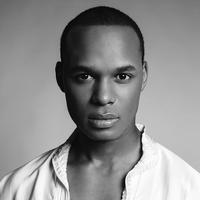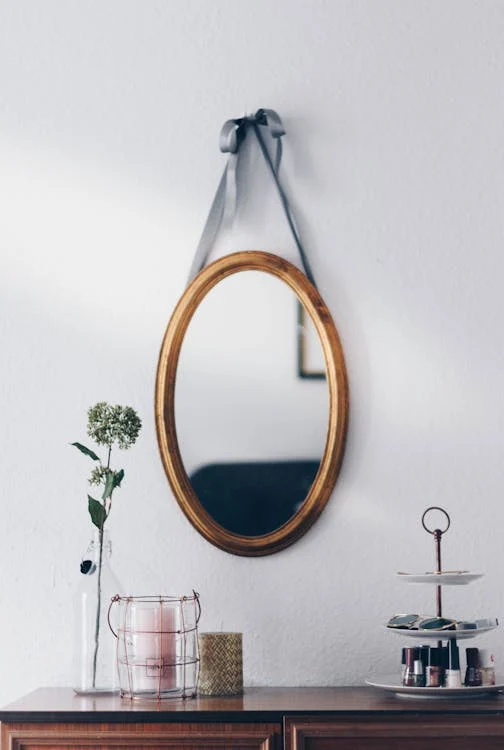Photo: Nadine Wuchenauer
This blog will address dancers studying codified techniques such as Graham, Horton, Limon, Jazz or classical ballet, as well as any dance that requires the demonstration of shapes as part of their core syllabi. Nevertheless, it is entirely transposable to anyone using mirrors to achieve tangible results in their practice of any form of movement or expression.
Last update: October 2024
This article was inspired by a letter sent to the brilliant minds of Graham and Horton students at M-Intensive University in our newsletter.
Our virtual teacher training sessions gifted me with a sense of enlightenment that can only come from the exchange of knowledge and ideas. I hope these words will inspire others to seek out their own moments of enlightenment, no matter where they may be found.
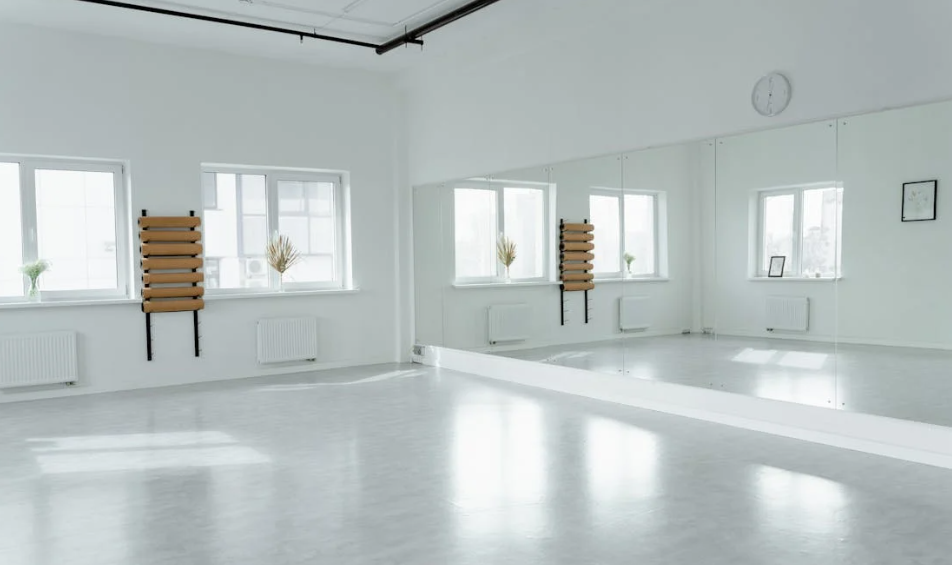
It's All About Balance
As a dancer and instructor, I have found that finding a balance between feeling the movement and using the mirror can be genuinely advantageous. The shapes in Horton or Graham's techniques go beyond stylistics and embody deep emotions, making them fundamental to the art of dance. While the mirror can be helpful, feeling the movement is equally important for achieving accurate shapes.
I have spent over 12 years researching and analyzing specific movements and their effects on my body. I used the mirror to define shapes, reinforce their meaning in my physicality, and enhance my work through videos. This process can help dancers understand the reasons behind each gesture and achieve the best results. Ultimately, dance is an art that requires both feeling and understanding of the movement. It is crucial to find a balance between the two and use them simultaneously to master dance techniques.
As you continue to train, remember that the mirror and screen can be helpful tools, but they should never replace the importance of feeling the movement and expressing yourself through dance.
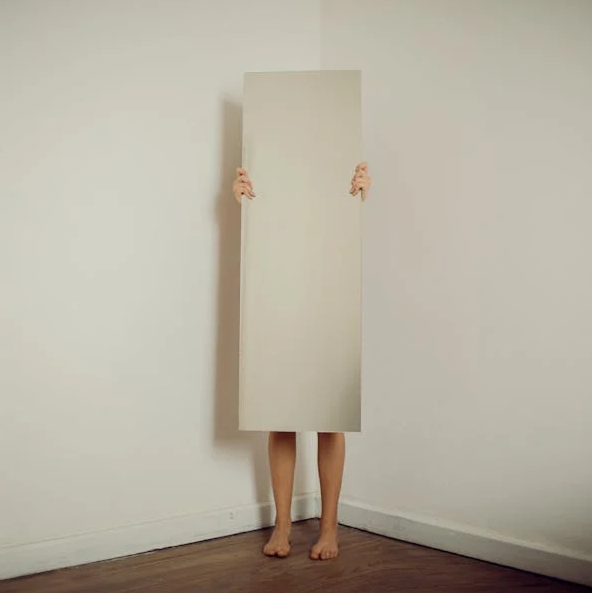 Show Yourself
Show Yourself
Many dancers are familiar with the use of mirrors in their training. Mirrors can be helpful in dance lessons, auditions, and choreography, regardless of the dancer's experience level. However, some people may feel nervous or anxious about seeing themselves in them. In certain studios, mirrors are not used to help dancers overcome their anxiety. If you feel uncomfortable with mirrors but still need to use them, there are ways to make yourself feel more relaxed.
Firstly, arrive early at the dance space, if possible, to get some time alone in the studio. Secondly, approach the mirrors and take a moment to observe your reflection in it. Don't wait for them to initiate contact! Be the first to say hello. This advice may seem trivial to those who are comfortable with mirrors, but for anyone experiencing anxiety around them, it can be a helpful tip. For example, if you are auditioning or taking a class, sit in front of the mirror and adjust your hair and outfit, or watch yourself for a few seconds so you can become more familiar with your reflection in the actual moment.
It is important to observe yourself during your practice and understand the kind of mirror you use. In some studios, they are set up across the entire room, and their weight can cause them to bend and distort your reflection. Warping, glass thickness, and lighting can all affect how you look in the mirror. By acknowledging these differences, you can see yourself from a new perspective and avoid discomfort during your lesson.
To get over your apprehension, you may need to repeat some exercises often until you get used to them and make them a normal part of your routine. Accepting your reflection is an important goal that you should work towards. When used correctly, a mirror can be a useful tool in improving your overall placement and developing your technique in a positive way.
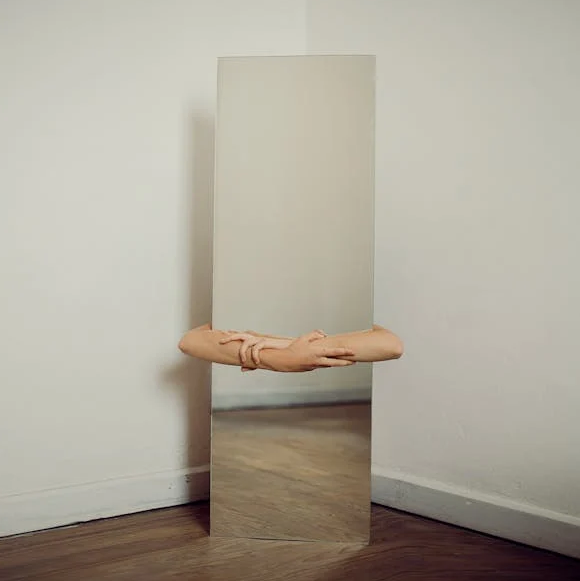 Embrace all of your reflections
Embrace all of your reflections
Instead of dwelling on what we don't like, let's focus on what we can do to improve ourselves. We all go through different life stages, and our reflections change as we evolve. If you can't see yourself today, remember that things can change tomorrow or in 15 days. The most important thing is to be honest with yourself. Acknowledge what bothers you now.
Instead of blaming the mirror, focus on what you don't appreciate seeing. Work towards fixing it and be patient. Dealing with the foundation of the problem might be what you need to heal for good. If you don't like something about yourself, don't get discouraged. Use that as motivation to improve that particular thing, you can't imagine how much you can do in just one year, so start today.
Whether it's working on your feet, losing weight, changing your style, or getting in shape, go for it. Always remain safe and prioritize your well-being whatever you do. Don't let fear hold you back. Believe in yourself and your ability to make positive changes. Remember, you are capable of achieving anything you set your mind to.
Let every reflection remind you how far you've come and how much more you can accomplish.
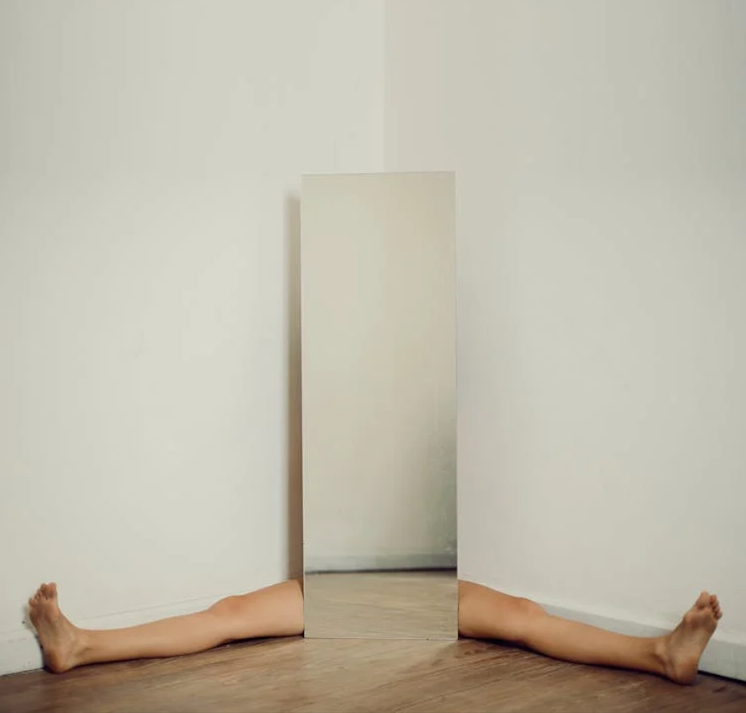 You Can Escape The Corners
You Can Escape The Corners
Dance is an art form that many people love, and it can also be a great way to maintain fitness. Dancing can be addictive, as it gives us a feel-good sensation. To transition from the studio to the stage, dancers need to work without the mirror at some point, which can be daunting. If you feel lost on stage without the mirror, you may be relying on it too much. However, the following tip can help you overcome this fear and get "the mirror in your head" by focusing on your body awareness, peripheral vision and inner compass.
Start by executing a Flat Back or Spiral from the Horton and Graham Techniques or any other movement you like. Deliberately use the mirror to help you align yourself accurately. Once you are in the right posture, forget about the mirror and close your eyes.
Focus on how it feels to be in the correct placement and intensely visualize your whole body in the space. Concentrate on the sensation in your toes, legs, back, neck, and head. Repeat it a few times until you can internally sense that you are demonstrating the precise shape.
This exercise will improve your technique and free you from relying on the mirror for validation.
Trusting your instincts and relying on your feelings to see the mirror in your head is essential to escaping this corner. It will help you strengthen your purpose and find truth in your movements.
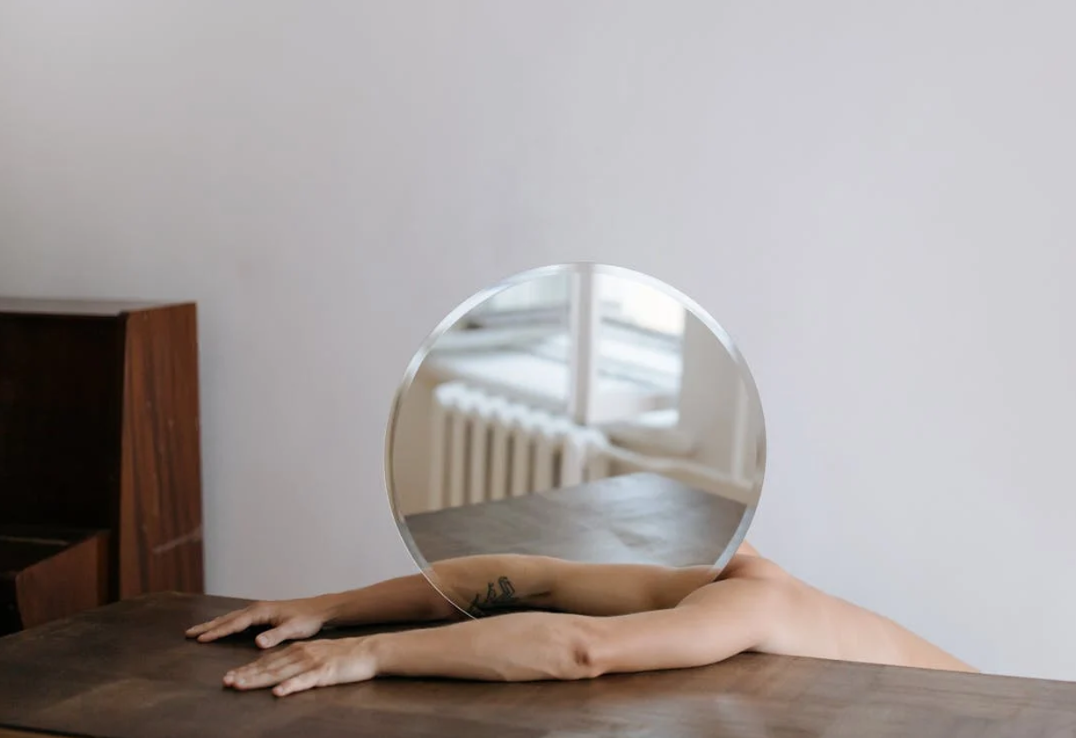 Teaching Without Mirrors
Teaching Without Mirrors
As a Graham and Horton educator, I appreciate having mirrors in the classroom for teaching specific dance shapes. However, I have also taught Masterclasses without mirrors, and while it can be challenging, simple teaching tools can enhance everyone's experience.
To foster self-reflection in your lesson in a supportive manner, follow these steps:
- Demonstrate new movements yourself once and then twice with two dancers. Position yourself in front of your students so that they can clearly mirror you and imitate your actions.
- It is essential that you actively involve your students in the lesson by physically guiding a student as an example for their peers. Don't hesitate to touch them if needed to place them in the correct positions and show the movement to the whole class. Repeat this process regularly until everyone understands it. Remember, a proactive approach is key to successful teaching!
- Finally, have the class practice what they have seen several times to work on alignment and get a feel for their bodies' movement.
Whether or not mirrors are present in the studio, these simple actions effectively improve students' understanding of alignment and boost their confidence.
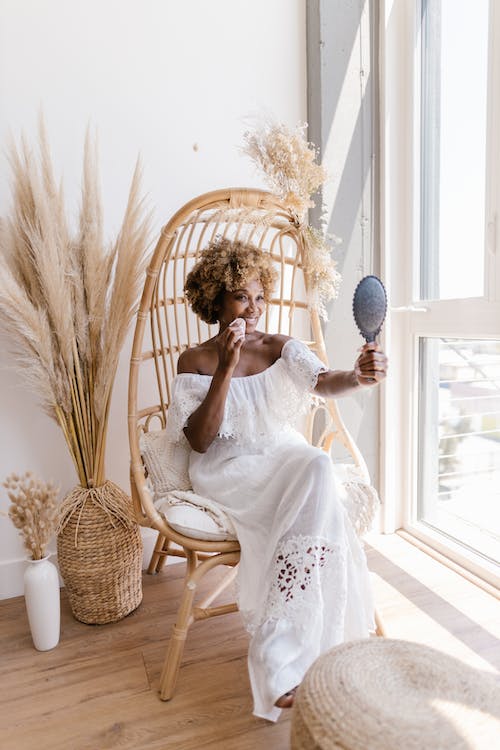 Project Joy
Project Joy
I had a fellow contemporary dance teacher who followed a particular routine. They often went to the studio alone to dance and move in the space after a long day of teaching. I believe this is great and perfect for many reasons. It allows you to release the tensions accumulated throughout the day, concentrate on your feelings, and deliver a brilliant amount of endorphins to yourself.
Use this moment to forget about the mirror and enjoy the pleasure of dancing. Dancers, especially teachers, should all use Lisa's technique to end their day positively and not forget the real purpose of dancing: Joy!
Graham and Horton: Mirror An Ancestral Heritage
As part of our online teacher training at MIU, we focus on technique and feeling. Our participants need not just to rely on anatomy to understand a movement but also to dance it. They come from different backgrounds and experience levels, so we aim to nurture their individuality while ensuring that they follow our rigorous and precise curriculum using established teaching procedures.
Some students prefer to rely on feeling, while others need more technical indications reinforced with an understanding of human anatomy. We encourage them to use both methods to find a harmonious balance that can resonate with a broad range of students.
We have created our latest CPD Course with this desire in mind.
In this series of online masterclasses, you will delve into the roots of Graham and Horton techniques. Martha Graham and Lester Horton were passionate about dance and were inspired by ancestral dance forms from their travels and studies. We have spent considerable time studying these methods to understand their deep connection with modern dance. The influences of Indian, Balinese, and Javanese classical dances, Afro-Caribbean dance, and Yoga can be seen in the lines, spirits, and cultural imprint of Graham and Horton's techniques.
These shapes, lines, and movements have been danced in faraway countries for centuries, influencing Horton and Graham and, subsequently, the contemporary dance world. Teachers and dancers can unlock their potential and elevate their skills through exploration and learning. The CPD Course Masterclasses comprises 17 lessons with Graham and Horton as its core.
Individuals can achieve new heights of mastery in art by embracing valuable wisdom and practising the foundational shapes of codified dances.
Isn't that the reflection perfect?
Learn more about our latest CPD and sign up here
"Mirror, Mirror On The Wall, Reveal To Me The Most Efficient Way Of All"
As a dance practitioner, you must use every asset to achieve your goals as a dancer and teacher. Remember to trust your feelings when studying and dancing the Graham and Horton movements. When struggling with specific shapes in Horton or Graham, the mirror can be a valuable ally, providing corrections when no one else can.
It can be a double-edged sword. On one hand, it can reflect our flaws and shortcomings, leading us to be critical and negative about ourselves. On the other hand, it can be a valuable tool for self-reflection and personal growth. By looking in the mirror, we can identify areas for improvement and work on becoming the best version of ourselves.
Sometimes, the only way to find the beauty and love you truly deserve, both as an artist and a person, is by facing your reflection in the darkness with courage. It may not be easy, but it will lead you to the warm light that awaits you.
May my students, teachers, and fellow artists one day gaze upon themselves in the mirror, on a video, or their screen and genuinely adore the reflection staring back at them.
Photos by Carolina Basi, Mart Production, RDNE Stock Project
Next on A Safe Place To Be:
What Do Dancers Think About Social Media?
Free yourself from your biggest addiction: Sugar!
Live a happy, healthy, and dancy life in 14 easy steps!
The best dance application in 8 easy steps
The real-life of a Dancer - And how to deal with it like a Pro
Interview: A Dancer's Life, The Story of Don Prosch
The New Dance Teacher's Guideline for Success
How to stay motivated? The Art of Visualisation!
11 reasons why you shouldn't skip ballet
The Ultimate Guide to a Complete Makeover
Disclaimer: All content provided on M-Intensive.co.uk is for informational purposes only. The owner of this blog makes no representations of the accuracy or completeness of any information on this site or found by following any link on this site. The owner will not be liable for any errors or omissions in this information nor for the availability of this information. The owner will not be liable for any losses, injuries, or damages from the display or use of this information. These terms and conditions of use are subject to change at any time and without notice.
